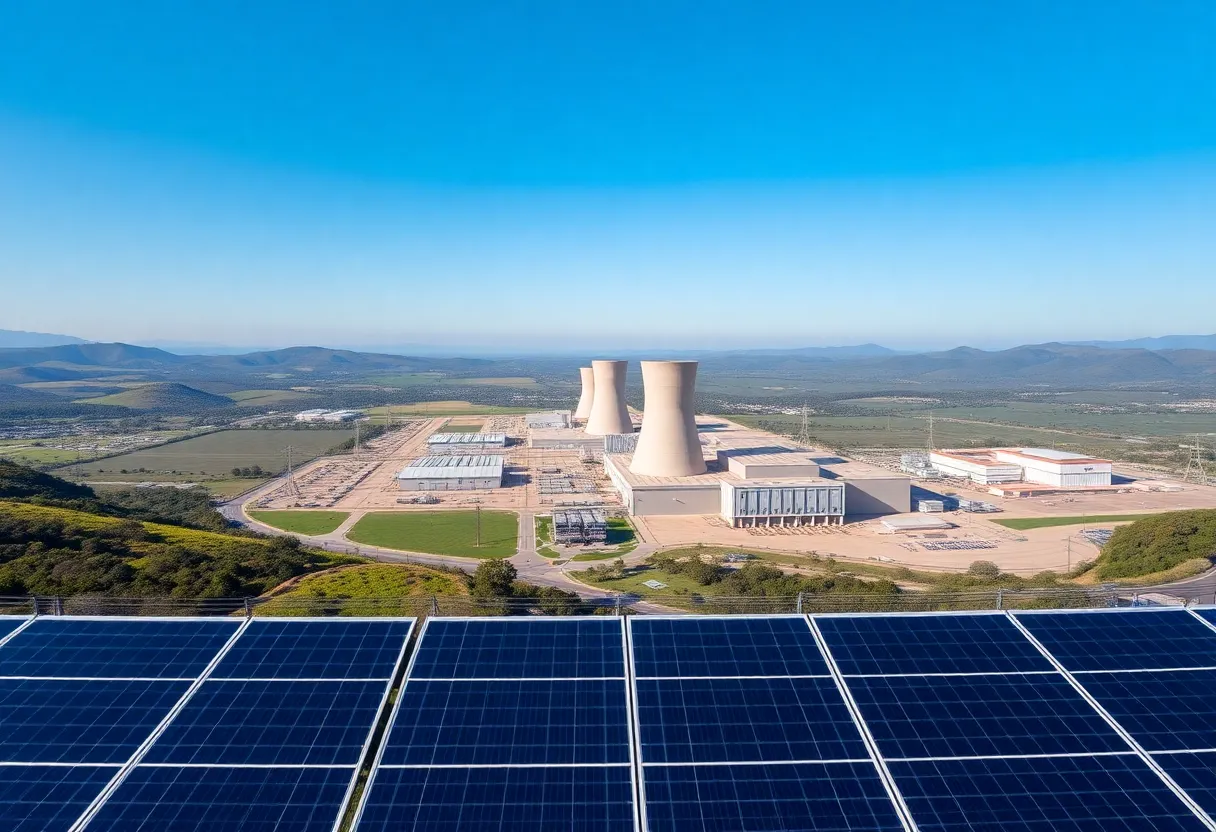News Summary
California’s nuclear energy moratorium, in place since 1976, presents significant challenges as the state looks to balance climate goals and economic growth. With rising energy demands and limited nuclear options, critics argue that the moratorium hinders achieving net-zero emissions by 2045. Legislative changes are being proposed to adapt to the current energy landscape, but opposition remains strong. The future of nuclear power in California is critical as the state navigates its energy needs and commitments.
California’s Nuclear Energy Moratorium: Struggling to Manage Climate and Economic Goals
California has been living under a moratorium on the licensing and construction of nuclear reactors since 1976, a decision that has significant implications for the state’s energy landscape. Established to await federal government action on a permanent solution for radioactive waste disposal, this moratorium has effectively restricted nuclear energy development for nearly five decades.
At the time of the moratorium, California operated two nuclear power plants, and a third plant was already under construction. These facilities were not immediately impacted by the moratorium since they had obtained all necessary permits prior to the 1976 ruling. However, during the years that followed, the landscape of nuclear energy in California changed dramatically. The Rancho Seco and San Onofre plants were permanently shut down in 1989 and 2012, respectively, largely due to rising operational costs and public opposition to nuclear energy.
As of 2012, Diablo Canyon remained the only operating nuclear power plant within the state, located near San Luis Obispo. Public resistance to nuclear energy has historical roots in California, persisting since the 1950s. This resistance peaked in the mid-1970s, contributing to the passage of the Warren–Alquist Act amendment, which formally instituted the moratorium. Critics now refer to it as a “ban,” arguing that it severely limits California’s energy options as the state grapples with increasing energy demands and climate change commitments.
Challenges in Meeting Climate Goals
California’s heavy reliance on imported fossil fuels contradicts its ambitious climate goals. In 2023 alone, the state imported approximately 4,724 GWh of coal-generated electricity. As increasing research indicates, the current moratorium stands to hinder California from achieving its 2045 net-zero emissions objective. Analysts project that from 2020 to 2040, California could miss out on around $12 billion in potential capital investments due to restrictive nuclear policies.
As demand for electricity surges, California may find itself more dependent on neighboring states to meet its energy needs, particularly for wind and solar resources. Nuclear energy is being highlighted as a viable solution to help achieve both energy security and climate targets. Some communities within California have expressed interest in hosting additional nuclear facilities, especially in the vicinity of Diablo Canyon.
Proposed Legislative Changes
In response to the pressing energy situation, various bills have been introduced seeking to amend or repeal the nuclear moratorium. These initiatives aim to facilitate the adoption of small modular reactors (SMRs) that can provide efficient nuclear energy. However, many of these proposals have yet to gain traction in the legislative process. Interestingly, both Republican and Democratic lawmakers, including the state’s governor, have shown openness to expanding the role of nuclear energy in California’s power portfolio.
Diablo Canyon’s operational life has been extended until 2030, with advocates pushing for future extensions that would last until 2045. Despite these efforts, opposition to nuclear power remains significant, particularly from organizations such as the Sierra Club, which continue to advocate against expansion. Additionally, proposals are also surfacing for the development of fusion reactors, indicating a potential shift in energy strategy considerations in California.
The Economic Implications
Proponents of nuclear energy argue that without expanding its capacity, California could face economic disadvantages. As tech companies look for substantial energy resources, failing to tap into the potential of nuclear power could leave the state vulnerable in future competition for investment. The environmental impact of nuclear waste continues to be a critical concern and remains a major obstacle to any nuclear expansion efforts within the state.
The ongoing discourse over California’s moratorium illustrates a challenging landscape where energy demands, economic growth, and environmental impacts compete for attention. As the state navigates these complexities, the future of nuclear energy remains uncertain, yet increasingly relevant in discussions surrounding the quest for a sustainable and economically viable energy future.
Deeper Dive: News & Info About This Topic
Construction CA Resources
Reality-capture and Projection Startups Lead $110M Construction Tech Funding
California Lawmakers Act on Clean Energy Amid Federal Cuts
Additional Resources
- Washington Examiner: 50-Year-Old Law Hamstrings California Nuclear Energy Ban
- Wikipedia: Nuclear Energy
- Bloomberg: Diablo Canyon Nuclear Plant Poised to Stave Off Extinction
- Google Search: California Nuclear Energy
- Politico: GOP & Dems’ Nuclear Energy Industry Problems
- Encyclopedia Britannica: Nuclear Energy
- San Luis Obispo: Significant Articles on Nuclear Energy
- Google News: California Nuclear Energy
Author: Construction CA News
The CALIFORNIA STAFF WRITER represents the experienced team at constructioncanews.com, your go-to source for actionable local news and information in California and beyond. Specializing in "news you can use," we cover essential topics like product reviews for personal and business needs, local business directories, politics, real estate trends, neighborhood insights, and state news affecting the area—with deep expertise drawn from years of dedicated reporting and strong community input, including local press releases and business updates. We deliver top reporting on high-value events such as the Rose Parade, Coachella, Comic-Con, and the California State Fair. Our coverage extends to key organizations like the California Building Industry Association and Associated General Contractors of California, plus leading businesses in technology and entertainment that power the local economy such as Apple and Alphabet. As part of the broader network, including constructionnynews.com, constructiontxnews.com, and constructionflnews.com, we provide comprehensive, credible insights into the dynamic landscape across multiple states.




